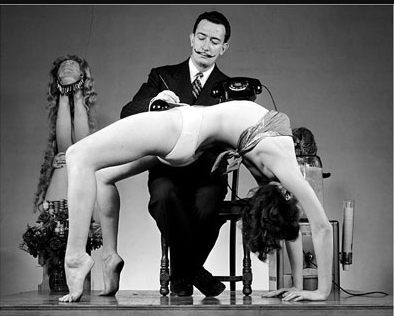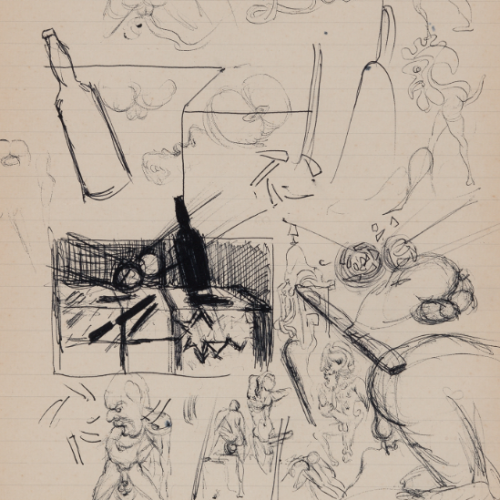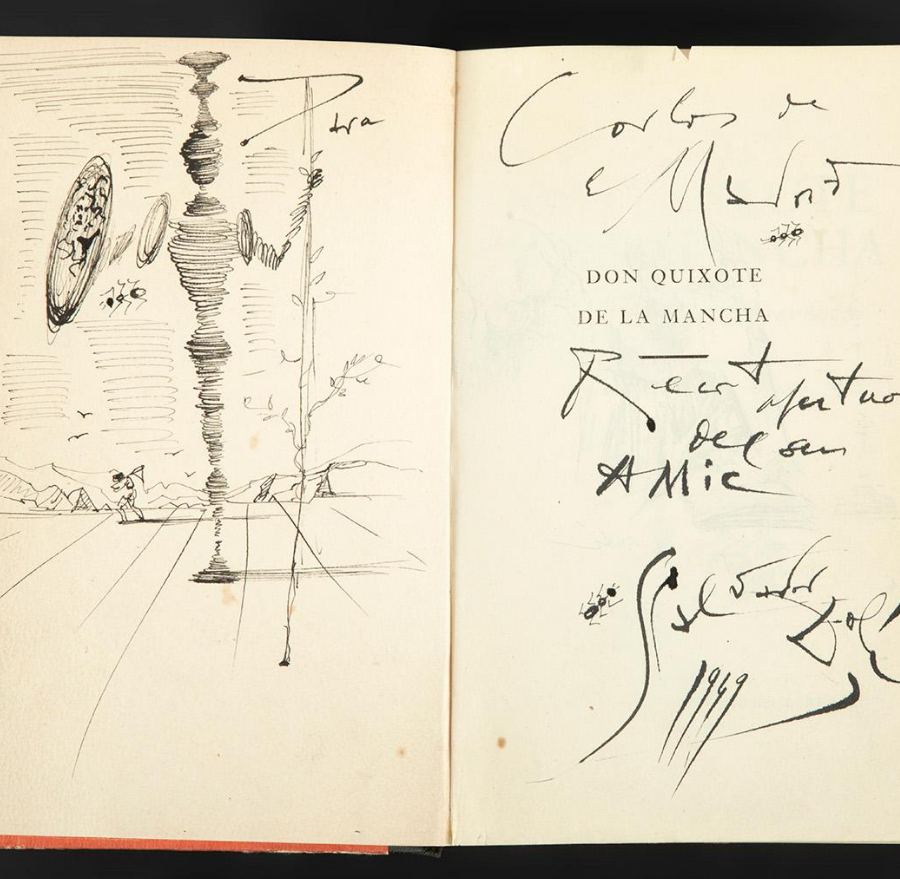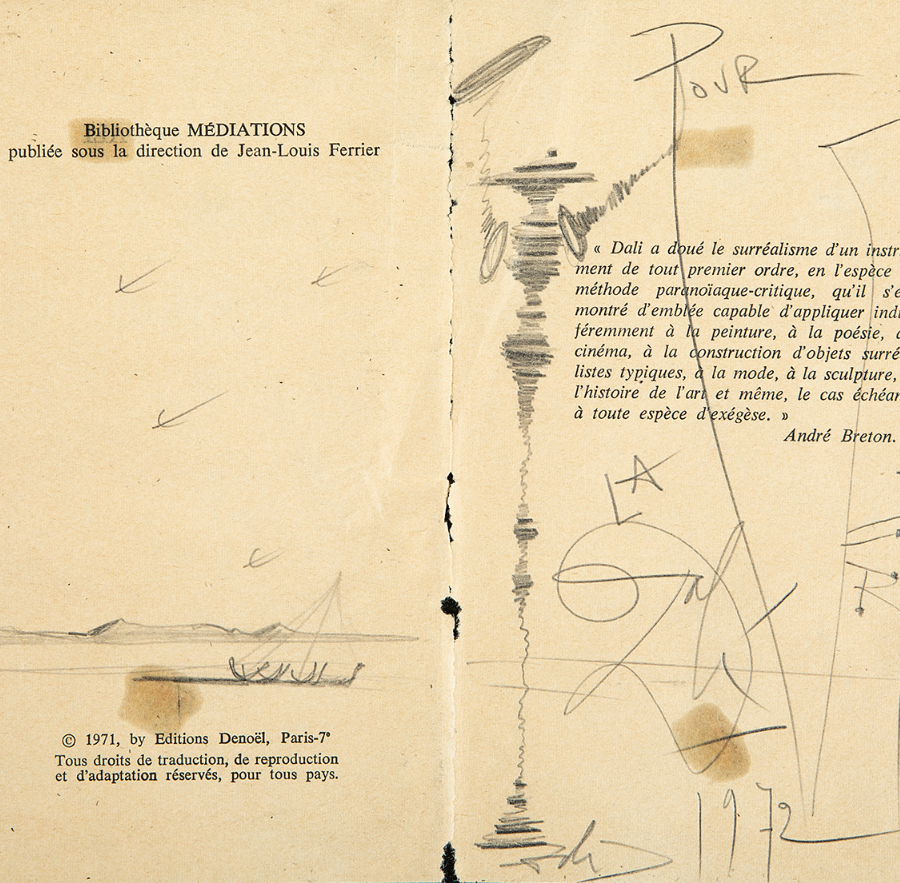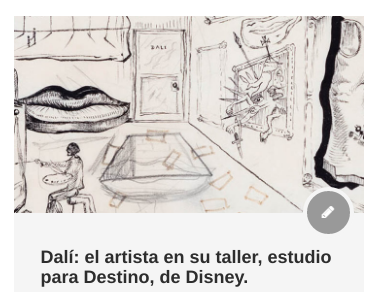Some facets of Dalí: erotic drive, Don Quixote and quantum physics
On numerous occasions, Salvador Dalí declared that eroticism was a divine thing, inseparable from mysticism, since Eros was a god . The genius of Ampurdán immersed himself fearlessly into the realm of erotic drives and the Oedipal traumas involved in them.
One of Dalí’s drawings that Setdart gathers in his ongoing auctions contains several sketches of erotic content , showing anatomical sections, masturbations, male figures related to Greek satyrs, and female forms metamorphosing into chickens. In the same role, the central place is occupied by a preparatory study for the painting “Living Still Life” (1956, kept at the Dalí Museum in Florida). Many elements already appear in this sketch that will be present in the final canvas: a series of objects (bottles, knives, fruits or spheres) levitating on a table, moving at will or according to Dalí’s interpretation of the atomic laws as they were being formulated by quantum physics, which so fascinated the surrealist painter. Dalí called this plastic research “nuclear mysticism”
This work (lot 35148668, “Etudeper le tableau Nature morte vivante et croquis éroques”, ca.1956) includes a certificate issued by Archives Descharnes, and presents the seal of the Perrot-More collection, whose owner John Peter Moore was the personal secretary by Dalí, who worked alongside the artist from 1960 to 1974.
Another subject that fascinated Dalí was the figure of Don Quixote, with whose madness he to some extent wanted to identify himself. His fascination with the Ingenious Hidalgo was materialized in the abundant drawings, illustrations, engravings and sculptures that the artist dedicated to the character of Cervantes.
The other two lots that Setdart is putting out to tender for Dalí in upcoming auctions are precisely drawings he made of the Knight of the Sad Figure: one of them is an original drawing by Dalí, signed and dedicated, on the cover of a New York edition of Don Quixote, published in 1949 and illustrated by the Empordà genius (no. 35251422). The other is an ink drawing (“Pour la verité”, 1972, no. 35266235), certified by Descharnes in 1983, in which, as is common in many Dalinian characterizations of the Knight Errant, the figure is a swirl of shapes agile and agile.
According to statements by Dalí himself, when in 1945 he undertook the body of 38 drawings and watercolors to illustrate the first part of Cervantes’s text, he did so influenced by the advice of his father, who had assured him that “Don Quixote was a work in which the faculties can easily excel ”. The original of that first copy is kept in the Dalí Theater-Museum in Figueras.
From the idyll of Dalí with Don Quixote a unique work was born that was a sincere tribute, but also a real revulsion for Cervantes’s legacy, inviting us to reread it with different eyes, counting on Don Quixote who no longer walked through arid La Mancha landscapes but by humid Empordà coasts.

